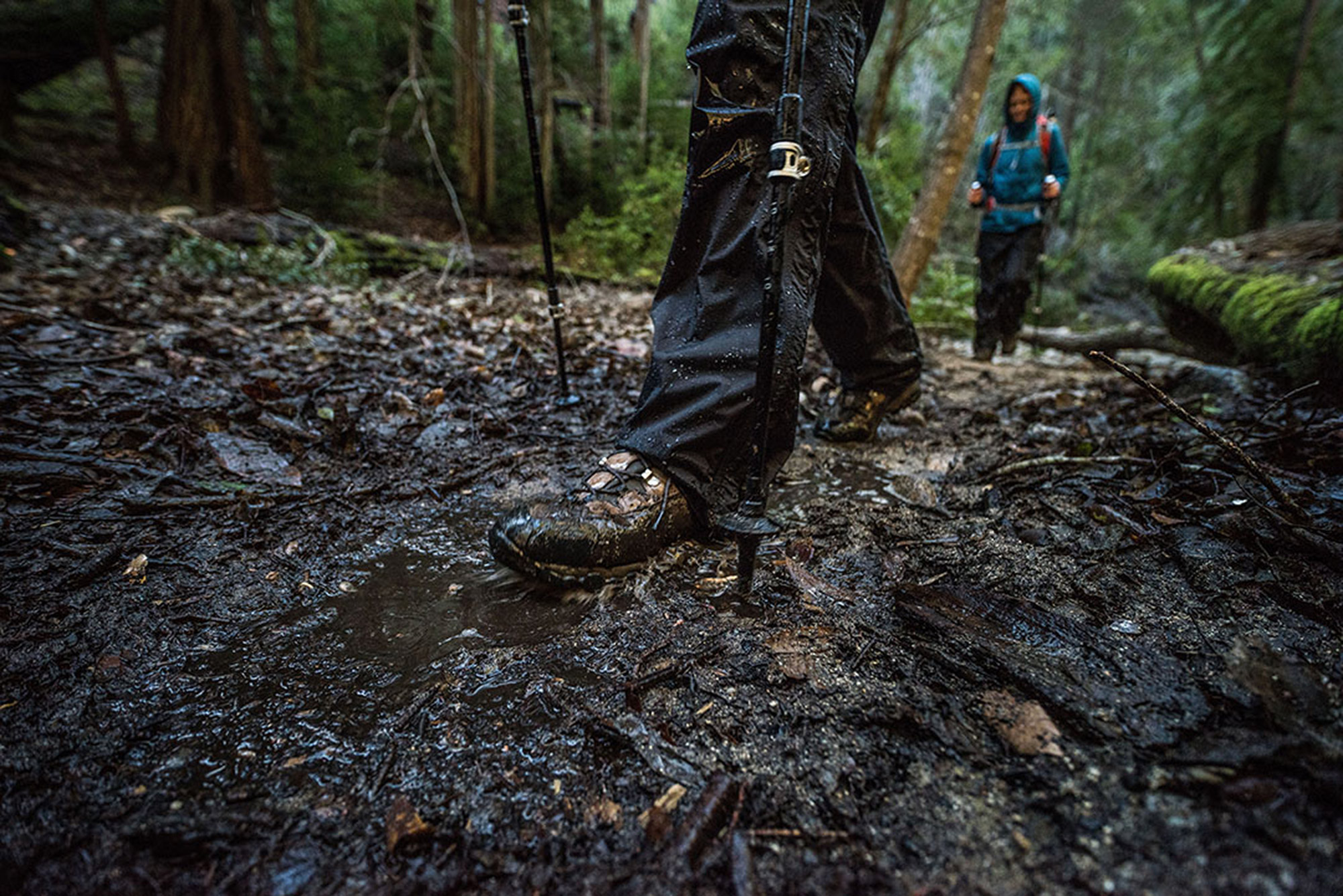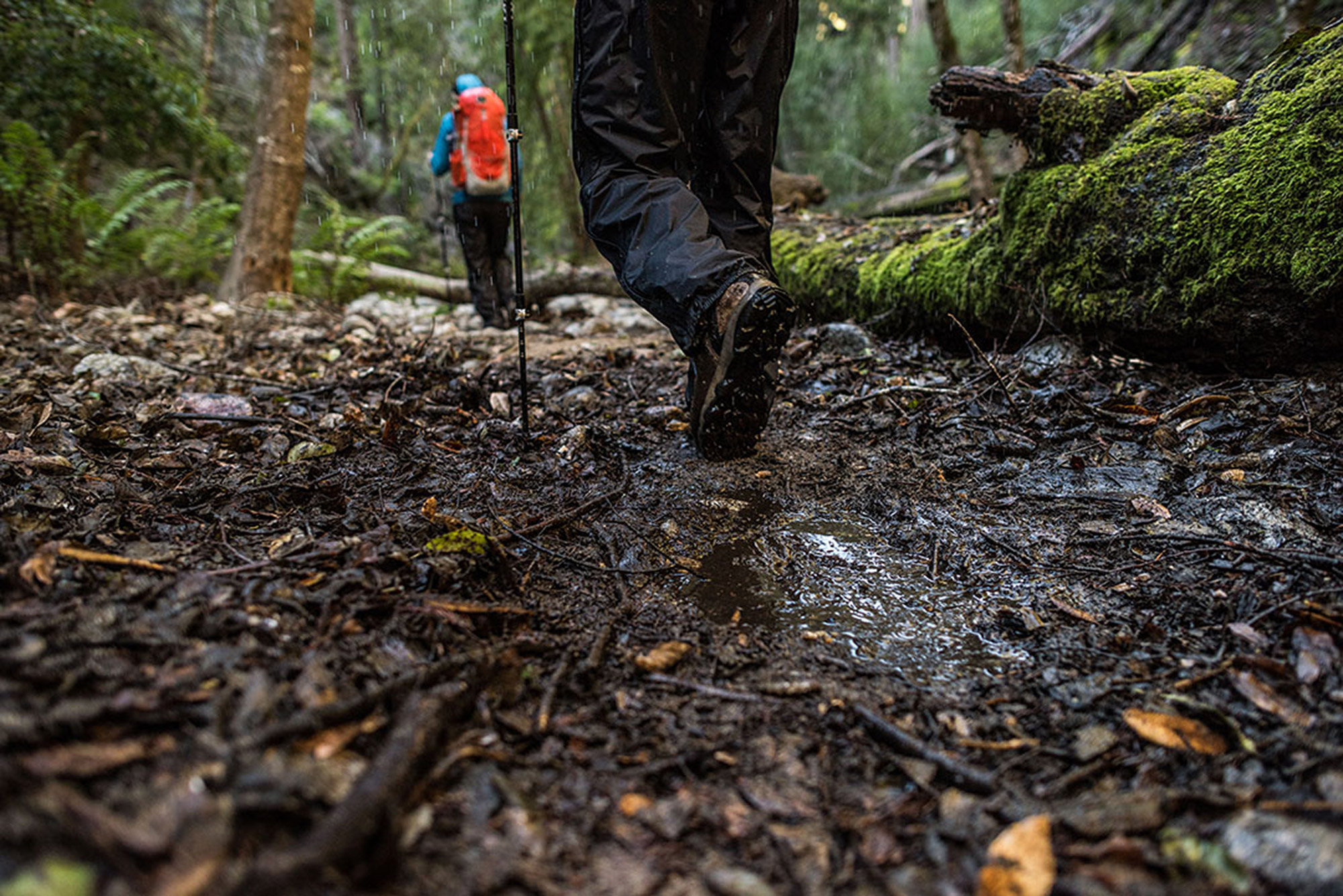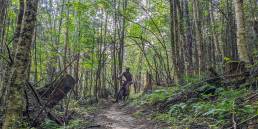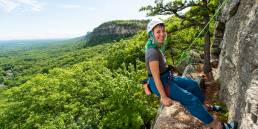Spring has finally arrived in New England; the days are getting longer, the weather is warmer, and the birds and peepers are providing the soundtrack to the season. Another sign of spring is the condition of the region’s dirt roads and trails. Ranging from muck to straight-up sinkholes—it’s called mud season for a reason—they’re poised to create some sticky situations for the unprepared.
What is Mud Season?
If you’re unfamiliar with mud season, it’s the time of year when snowmelt, wet weather, and thawing ground all work together to make dirt roads and trails susceptible to damage and turn otherwise causal hikes and drives into soul-sucking trudges through muck and mire. For those of us in the Northeast, particularly those in its northern reaches, you could argue that “Mud” is an unofficial fifth season, occurring for a few weeks between winter and spring.
On a recent trip to hike a section of the Appalachian Trail near Maine’s Baxter State Park, I encountered the full gamut of mud season challenges. The dirt logging roads used to access trailheads were far from solid, consisting of thick mud that threatened to swallow a car. The trails weren’t much better, with patches of snow and deep sludgy puddles that would suck a boot off your foot if caught unaware. While I encountered amazing views of migrating wildlife and occasional glimpses of moose and bear, the trip also served as a reminder to practice proper mud season etiquette so that the summer isn’t spent repairing the trails and roads used to access them.
Driving During Mud Season
Driving on dirt roads during mud season is treacherous. Even if the road looks in good condition, it can have soft spots or ruts that you may not immediately see. Getting a car stuck isn’t especially good for your vehicle and can lead to a long walk out (or to cell phone reception). Consequently, the safest strategy is to avoid them if possible. Historically problematic roads are commonly closed and many municipalities allow only local traffic on dirt roads during mud season.
If you encounter a muddy road on your way to the trailhead this spring, consider finding a place to park and adding a little extra mileage to your day. Another option is to find a more easily accessible trail to hike that day, like one off a paved road. In the long run, steering clear of dirt roads will save you both time and aggravation.
Hiking During Mud Season
While not exactly mud, high water is one of the major challenges facing hikers during mud season. Increased water levels can make crossing everything from wetland bogs to creeks to streams demanding, if not near impossible, especially if they’re not bridged. Before hitting the trail in the spring, do some research and determine if your route crosses any waterways that could pose problems. Satellite maps, hiking apps, and Facebook groups are good resources for gauging trail conditions.
Even the best-prepared hiker will encounter obstacles during mud season. If you have to navigate around an obstruction like an overflowing stream or pond, choose the path of least resistance, which is often through the forest. When traveling off-trail, avoid damaging vegetation and give the bank of the water a wide berth to keep from caving it in. If you can’t find a safe place to pass or avoid squishy ground, take it as a sign to turn around—conditions probably won’t get better and you’re likely to do lasting damage to the trail and surrounding area.
Another encumbrance often encountered in mud season is blowdowns. Heavy snow, strong winds, and decreased traffic increase the likelihood of running across trees and branches obstructing the trail. Some blowdowns are easier to negotiate than others. If possible, go over, under, or around using care for your safety and the surrounding areas. If the blowdown is clearable, consider doing a good deed by moving the obstruction out of the way and re-opening the path for other hikers.
Pursue Other Activities
One of the best things you can do during mud season is to avoid hiking altogether. Going rock climbing, spending some time in your kayak, or biking on a more durable surface (like the road or fat biking on the beach) are all great mud-season-friendly activities that get you some outside exercise while preserving the trails.
Another mud season activity that I’ve come to enjoy is birdwatching. Get a good pair of binoculars, download the must-have Merlin Bird ID app, head to the local Audubon Society, and get busy identifying the birds migrating back to the Northeast. If birds aren’t your thing, explore the region’s vernal pools; they’re popping in the spring with frogs and salamanders.
While the trails aren’t ideal for hiking during mud season, it’s a great time to volunteer. Connect with a local trail-focused group like the AMC or Green Mountain Club to find out what type of opportunities are available—whether it’s maintaining trails or educating others on what trails are open or mud season hiking etiquette.
Lastly, spring is also an excellent time to go through your hiking kit and backpacking gear—cleaning, repairing, and inventorying—to ensure everything is in tip-top shape for when the trails dry out.
Down and Dirty
The arrival of mud season doesn’t mean the end of adventuring. With the right know-how and planning, it’s still possible to hike during the sloppy season or use the time to explore that activity you’ve always been meaning to try.
Mike Spadea
Mike began working at Eastern Mountain Sports when he was just 15 years old. There he met a community of mentors who helped nurture his love of nature and introduced him to various new outdoor activities. Today, Mike serves on his local conservation commission and continues to share his knowledge of the outdoors with others.
Related Posts
April 24, 2024
What to Bring When Road Tripping with Your Dog
Prepare for the ultimate road trip with…







